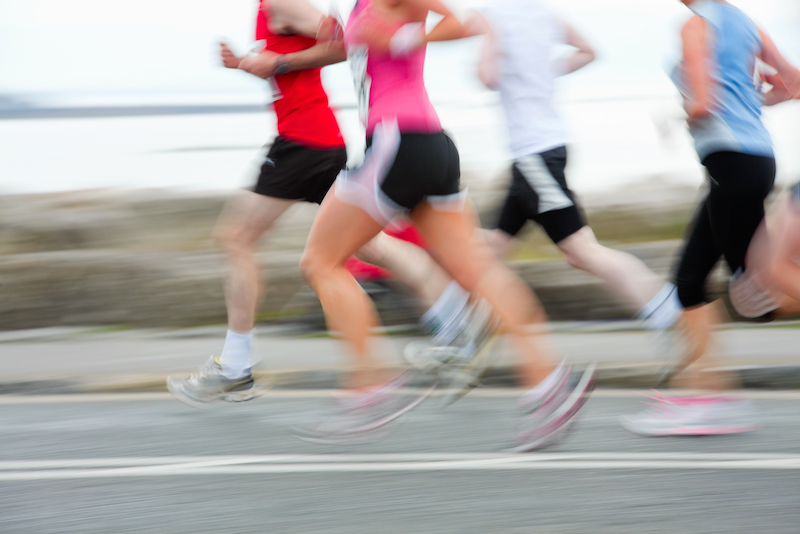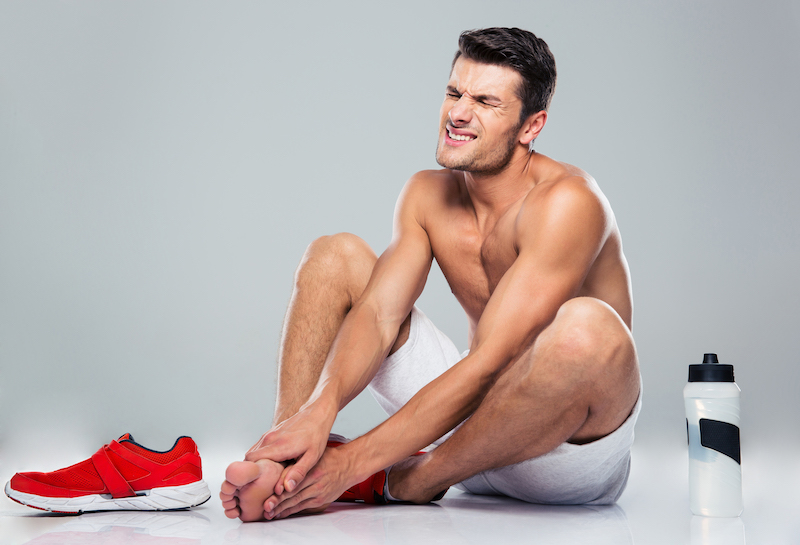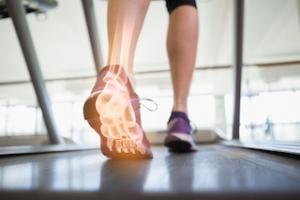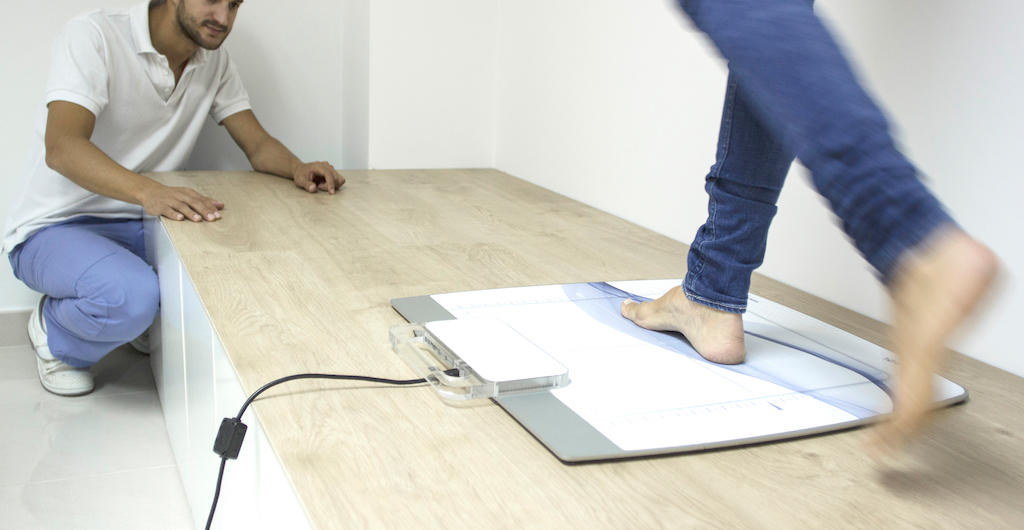3 Things Runners Need To Know To Prevent Foot Pain
Are you wanting to get into running over the summer or improve your personal best but there’s pain in your feet and/or lower leg that is holding you from reaching your running potential?
Have you tried different brands of runners or insoles but just can’t seem to have a pain-free run? Are you concerned the pain is now affecting other normal daily activities? Have you been told to rest but as soon as you start running, the pain redevelops? Are you frustrated hearing the only solution is to give up the thing you love most?
Don’t despair, our Podiatrist Dr Ella Wright has been working with all levels of running abilities from the novice to the more serious marathon runner. What she has found, foot and lower leg problems such as plantar fasciitis or shin splints are often misdiagnosed and the mechanics of the foot are poorly understood.
The foot is a complex structure containing one-third of all the body’s bones, so it is highly articulated, meaning lots of joints!. This enables the foot to cope with ever-changing natural undulating surfaces. In addition, it contains 3 very important arches to support a person’s weight. It’s no coincidence the Romans used arches when they built bridges and the coliseum! The foot is an engineering marvel and works a treat when it is at its biomechanical best, but when it’s not, you certainly suffer the devastating effects of not being able to walk pain-free.
Podiatrists spend 4 long University years studying the foot and lower limb which is why they earn the title of Doctor of Podiatric (Greek for foot) Medicine. The foot is their area of specialty and a whole medical profession dedicates itself to this one part of the body, so who’s best to see when you have problems with running? a Sports Podiatrist of course!
If you have been suffering from foot pain for a few months or you think you may have a complex foot problem you may be eligible for an EPC Medicare Plan, which means you are entitled to 5 Medicare Rebate sessions per year with Dr Ella. To find out more click here!
Runners often report a range of foot pain predominantly because there are many different reasons as to why runners develop foot pain.
Most commonly, Dr Ella sees runners that report:
- pain on the outer side of the foot after running
- pain on the ball of the foot or the big toe joint
- pain on the top of the foot
- arch pain after running
- foot pain running up the leg
- stiff feet after running or after prolonged rest e.g getting out of bed or the couch
So what are the 3 most important things runners need to know to prevent foot pain?
If you want to get back to running, Dr Ella says there are the 3 main things you should consider:
1. Load Tolerance
Load tolerance is the body’s ability to handle the stress which exercise puts on it.
As running has such a significant impact on the body there is a delicate balance between the load sustained by running and the amount of load your body tissues can actually handle. Often, especially in new runners the strength and flexibility just isn’t there, leaving runners sore and reluctant to get back into running. When we run, the forces going through our body can be 2.5 – 3 times your body weight, with the calve muscles having to accept 6 times the normal body weight in load. Often this can lead to ankle, calf, and shin pain. As the brain produces higher levels of endorphins (the addictive euphoric feeling runners get) as a side-effect of running, runners won’t feel the pain until after they’ve stopped running.
How to overcome this?
- Exercises other than running are just as important; you need to make sure your body is strong enough to handle the impact of running.
- Progress your training gradually, it’s been widely accepted that you should never increase your training any more than 10% per session.
- Moderate rest is just as important as the effects of running accumulate. Rest to allow the body to recover, heal and prevent injury
- Avoid running on hard surfaces such as concrete or drought-affected dry parklands
- Avoid running when tired or recovering from an injury
- Ask a Podiatrist to assess your lower leg and foot strength and function, isolating any areas of weakness, customising an exercise regime to strengthen any weakened parts
2. Biomechanics
Often the way we run is much more important than the footwear and orthotics we use.
Recent studies have shown, those with a very long stride or those who land on their heels are as much as 2.5 times more likely to sustain injuries with higher rates of low back, hip, knee and ankle pain. Even those with very high or flat arches have a higher chance of ankle injuries and shin splints.
How to overcome this?
- Be mindful when running to run with a shorter stride length
- Making sure you land on your forefoot (balls of feet) – this will greatly reduce the amount of force going through your body. The majority of elite distance runners are forefoot or mid-foot runners despite 80% of runners being rearfoot runners (striking the ground with the heel first)
- If you are thinking of changing your running style, book a few sessions with a running coach and make the transition slowly
- Consult a Podiatrist for a biomechanics assessment if you think that there may be issues with your foot position. A thorough foot assessment often identifies how and where running issues are stemming from.
- Use Kinesio-tape to strap the foot and trial it. Not sure how to do it? Consult a Podiatrist who can assess your foot type and biomechanics teaching you how to best utilise taping. Often orthotics designed for runners (yes they are different from normal orthotics!) are fashioned from the feedback and knowledge gained by using the Kinesio-tape as every foot and running stride is different so accurate tried and tested customisation ensures a successful outcome
- Footwear reviews, often poor footwear can cause many issues
- Feet come in all different widths and arch heights (high to flat) so properly fitted runners that suit your foot type is an important consideration. Keep in mind a poor running style accompanied with poor foot biomechanics will not change with a new pair of runners no matter how expensive they are!
3. History
Often we overlook our history especially injuries and tend to just “walk them off’ without the proper rehabilitation. Those who have had lots of sprains even having long-term instabilities as a result of poor follow-up. Being considerate of our age, weight, previous sports activity and running surface.
How can we overcome this?
- Addressing any previous injuries and biomechanical issues before getting into distance running
- Modifying the running surface and exploring your current running regime and running style
- Addressing and modifying previous orthotics
So What Does A Sports Podiatrist Do for Runner’s Feet?
When treating foot pain our Sports Podiatrist uses a 5 phase strategy to get the best results:
PHASE I: First Aid Relief. Our Podiatrist Dr Ella Wright will focus on pain relief, reduction of swelling (if any) and the use rigid taping to support the foot as he works out the underlying cause of the foot pain.
PHASE II: Lower Limb Biomechanical Assessment & Joint Mobility. Dr Ella will focus on restoring normal ankle and foot range of motion. A full biomechanical running assessment of how the foot strikes the ground and toes off (for both gait & running analysis) is very important in understanding the underlying reasons the foot is in pain.
Often foot pain is associated with flat feet (foot pronation) so unless this is addressed, the continual trauma transferred to the foot when running will cause further more complicated damage in time. All 3 arches in the foot are assessed as well as the surrounding joints and muscles during the phases of standing, walking and running.
Treatment may include custom foot orthotics (specific to running, joint mobilisation and alignment techniques, dry needling, trigger point therapy, soft tissue massage, shock wave therapy (SWT), ultrasound, TENS, muscle and joint stretches, Kinesio or rigid supportive strapping. Research has shown that SWT is particularly successful in the treatment of plantar fascitis & shin splints.
PHASE III: Restoring Normal Muscle control and strength in the foot and lower leg are vital for sustainable results. Dr Ella will assess and prescribe the best exercises for your specific needs. Balance enhancement exercises, strength exercises, active foot posture correction exercises, as well as proprioception exercises would be prescribed.
PHASE IV: Returning to your normal running activities. Dr Ella will adjust your treatment schedule to help you get back to the level of running you were at before the pain developed and prepare you for marathons if that is your ambition.
PHASE V: Prevention. If the core underlying culprit is addressed and home self-management instructions adhered to, then reoccurrences of painful runner’s foot episodes, will be fewer and far between.
It’s normal to be worried about what the actual treatment might entail especially if it already hurts. Our Podiatrist Dr Ella Wright totally understands your apprehensions having worked as a busy Podiatrist in rural communities for many years. She has fine-tuned her diagnostic abilities and developing a gentle touch that only experienced hands can offer. She explains everything in simple clear language and provides solid advice offering options as to how you can proceed. Her well-rounded holistic approach with her down to earth attitude makes her very popular amongst her patients and colleagues.
Dr Ella only accepts cases she can help and offers a money-back satisfaction Guarantee.



